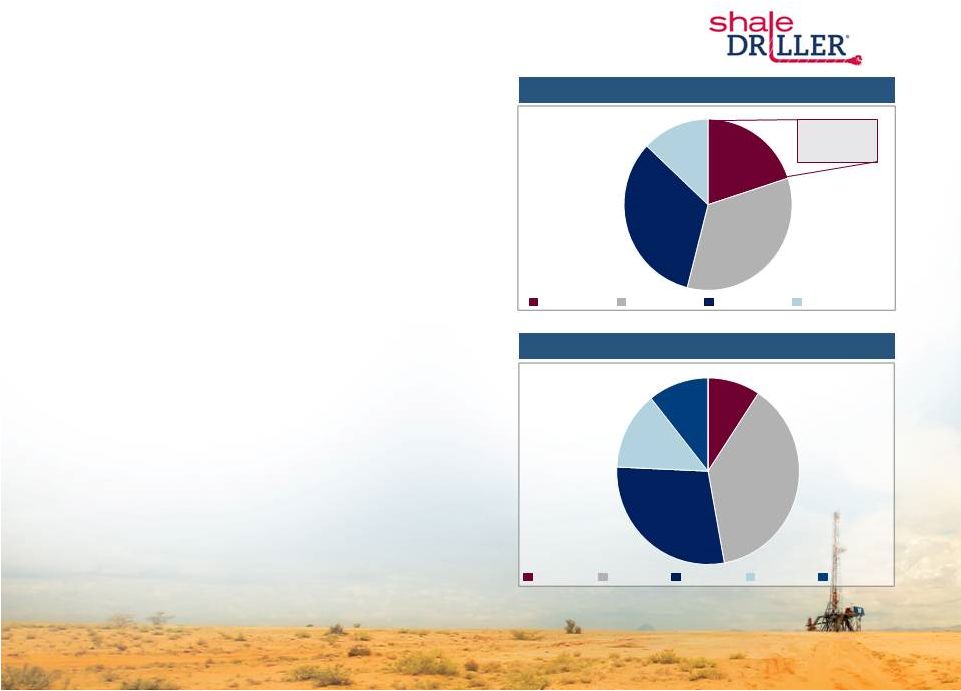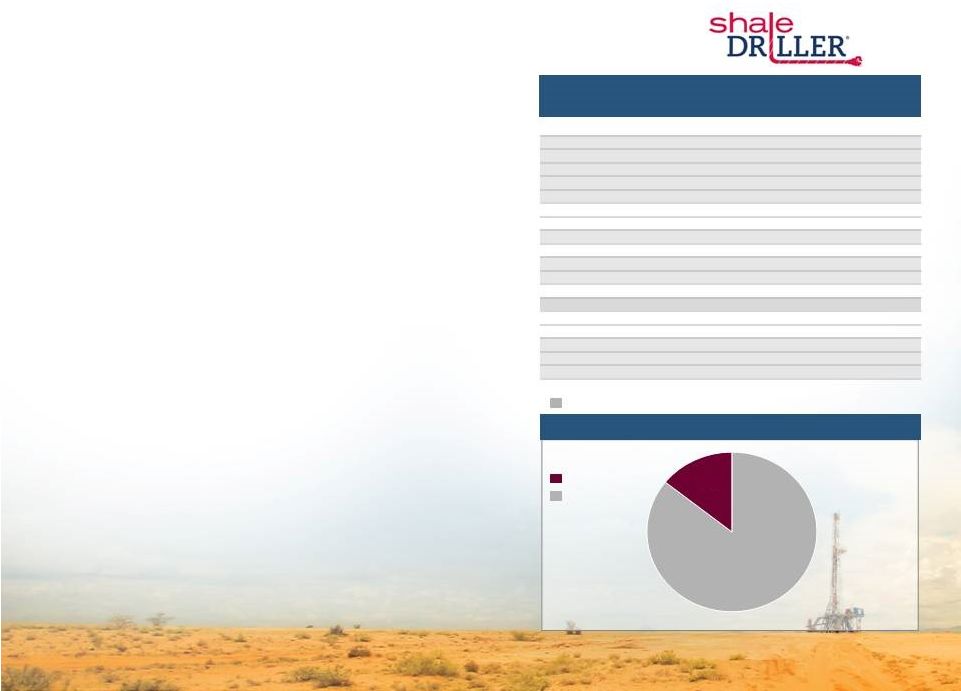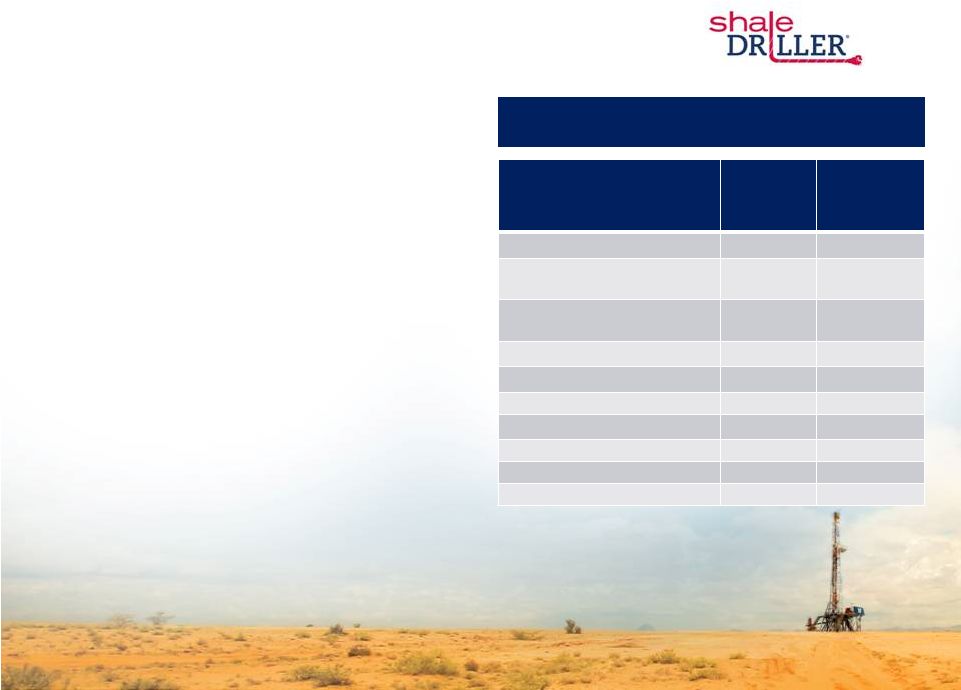Preliminary Matters 2 Various statements contained in this presentation, including those that express a belief, expectation or intention, as well as those that are not statements of historical fact, are forward-looking statements. These forward-looking statements may include projections and estimates concerning the timing and success of specific projects and our future revenues, income and capital spending. Our forward-looking statements are generally accompanied by words such as “estimate,” “project,” “predict,” “believe,” “expect,” “anticipate,” “potential,” “plan,” “goal,” “will” or other words that convey the uncertainty of future events or outcomes. The forward-looking statements in this presentation speak only as of the date of this presentation; we disclaim any obligation to update these statements unless required by law, and we caution you not to rely on them unduly. We have based these forward-looking statements on our current expectations and assumptions about future events. While our management considers these expectations and assumptions to be reasonable, they are inherently subject to significant business, economic, competitive, regulatory and other risks, contingencies and uncertainties, most of which are difficult to predict and many of which are beyond our control. These and other important factors, including those discussed under “Risk Factors” and “Management’s Discussion and Analysis of Financial Condition and Results of Operations” included in the Company’s filings with the Securities and Exchange Commission, including the Company’s Annual Report on Form 10-K, may cause our actual results, performance or achievements to differ materially from any future results, performance or achievements expressed or implied by these forward-looking statements. These risks, contingencies and uncertainties include, but are not limited to, the following: our inability to implement our business and growth strategy; a sustained decrease in domestic spending by the oil and natural gas exploration and production industry; decline in or substantial volatility of crude oil and natural gas commodity prices; fluctuation of our operating results and volatility of our industry; inability to maintain or increase pricing on our contract drilling services; delays in construction or deliveries of our new land drilling rigs; the loss of our customer, financial distress or management changes of potential customers or failure to obtain contract renewals and additional customer contracts for our drilling services; an increase in interest rates and deterioration in the credit markets; our inability to raise sufficient funds through debt financing and equity issuances needed to fund our planned rig construction projects; our inability to comply with the financial and other covenants in debt agreements that we may enter into as a result of reduced revenues and financial performance; a substantial reduction in borrowing base under our revolving credit facility as a result of a decline in the appraised value of our drilling rigs; overcapacity and competition in our industry; unanticipated costs, delays and other difficulties in executing our long-term growth strategy; the loss of key management personnel; new technology that may cause our drilling methods or equipment to become less competitive; labor costs or shortages of skilled workers; the loss of or interruption in operations of one or more key vendors; the effect of operating hazards and severe weather on our rigs, facilities, business, operations and financial results, and limitations on our insurance coverage; increased regulation of drilling in unconventional formations; the incurrence of significant costs and liabilities in the future resulting from our failure to comply with new or existing environmental regulations or an accidental release of hazardous substances into the environment; the potential failure by us to establish and maintain effective internal control over financial reporting; lack of operating history as a contract drilling company; and uncertainties associated with any registration statement, including financial statements, we may be required to file with the SEC. All forward-looking statements are necessarily only estimates of future results, and there can be no assurance that actual results will not differ materially from expectations, and, therefore, you are cautioned not to place undue reliance on such statements. Any forward-looking statements are qualified in their entirety by reference to the factors discussed throughout this presentation. Further, any forward-looking statement speaks only as of the date on which it is made, and we undertake no obligation to update any forward-looking statement to reflect events or circumstances after the date on which the statement is made or to reflect the occurrence of unanticipated events. EBITDA and Adjusted EBITDA are supplemental non-GAAP financial measures that are used by management and external users of the Company’s financial statements, such as industry analysts, investors, lenders and rating agencies. The Company defines “EBITDA” as earnings (or loss) before interest, taxes, depreciation, and amortization, and it defines “Adjusted EBITDA” as EBITDA before stock-based compensation, and non-cash asset impairments and gain (or loss) on asset disposition. EBITDA and Adjusted EBITDA are not measures of net income as determined by U.S. generally accepted accounting principles (“GAAP”). The Company’s management believes EBITDA and Adjusted EBITDA are useful because such measures allow the Company and its stockholders to more effectively evaluate its operating performance and compare the results of its operations from period to period and against its peers without regard to its financing methods or capital structure. The Company excludes the items listed below from net income (loss) in calculating EBITDA and Adjusted EBITDA because these amounts can vary substantially from company to company within the Company’s industry depending upon accounting methods and book values of assets, capital structures and the method by which the assets were acquired. EBITDA and Adjusted EBITDA should not be considered alternatives to, or more meaningful than, net income (loss), the most closely comparable financial measure calculated in accordance with GAAP or as an indicator of the Company’s operating performance or liquidity. Certain items excluded from Adjusted EBITDA are significant components in understanding and assessing a company’s financial performance, such as a company’s cost of capital and tax structure, as well as stock-based compensation and the historic costs of depreciable assets, none of which are components of Adjusted EBITDA. The Company’s presentation of EBITDA and Adjusted EBITDA should not be construed as an inference that its results will be unaffected by unusual or non-recurring items. The Company’s computations of EBITDA and Adjusted EBITDA may not be comparable to other similarly titled measures of other companies. | 



















